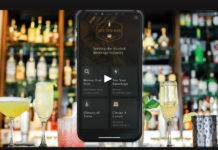
In the realm of energy drinks, is there room to compete with Red Bull? And what does the answer to that question mean for on-premise operators looking to give their patrons the best option for a boost and a good mixed drink? An industry insider and new market research may help us find out.
By Chris Ytuarte
By nature, competing with a first-to-market brand in any field is a challenge, to say the least. Take the Apple iPod, for instance. Do you know anyone with a Zen? Or an iRiver? Or a Microsoft Zune? Probably not.
And such is the mountain that many must climb should they want to compete with Red Bull in the energy drink category. As the acknowledged market leader, though, Red Bull has naturally ventured into various different off-premise segments that, according to industry insiders, has left them at least somewhat vulnerable to newer brands claiming a stake to on-premise market share. And for bar and club owners nationwide, this creates options.
We spoke with Sean Hackney, a former senior marketing executive at Red Bull who, along with several other Bull defectors, struck out on their own several years ago to create Roaring Lion, an energy drink that aims its business plan almost entirely at on-premise accounts. The company currently offers an innovative bag-in-the-box product, which allows for Roaring Lion to be dispensed via beverage guns behind the bar. “Red Bull’s approach to bars is, ‘We make your bar cooler,’ says Hackney. “Our approach is, ‘We make your bar money.’” His comments on competing with Red Bull and bringing value to bar and club owners show how they can benefit.
“Over the last ten years, it’s been ‘sell, sell, sell,’” says Hackney. “We didn’t get to be number two in the bar and nightclub business by not putting people in the street and knocking on bar doors. That’s what we do, and that’s where our bread and butter is—about 80% of our business is on-premise.”
We also poured over the findings of a recent study of the overall beverage market, titled “Functional Drinks in the U.S.,” that was conducted by Euromonitor International, a global market research company specializing in industries, countries, and consumers. Pertinent findings from that study are highlighted in red throughout this article:
Energy drinks showed the highest growth in 2009, with value sales increasing by 9%, to reach US$9.4 billion, and as a whole, are predicted to show the strongest growth over the 2009-2014 period amongst functional beverages, rising by 31% in total volume terms. Such drinks remain popular in both on-trade and off-trade channels, especially among younger “Generation Y” consumers, for whom the drinks have replaced coffee as the preferred source of caffeine. Part of this appeal is due to the newness of energy drinks, which have only been in the US for a little over a decade, and are unlikely to be used by the baby boomer parents of this generation. Energy drinks are also appearing in more flavors, brands, and formats than before, which allows more consumers to find unique brands that appeal to them.
With the combined insight of Hackney’s hands-on knowledge and the third-party objective research findings, an on-premise operator can get a great sense of where the energy drink segment is heading and how to benefit from every movement in the market.
“Our position against Red Bull involves a couple of facets,” says Hackney. “First, we put ourselves directly up against Red Bull in taste and function. We believe Roaring Lion is closer to Red Bull than Pepsi is to Coke. And from an ease-of-use standpoint, we’re the first company to offer a bag-in-the-box product, as well as a 500ml bottle and 350 ml can, which allows us to support an account depending on the kind of bar or nightclub it is. A high-end martini bar might just take our cans. A low-volume whiskey bar may take our bottle product. And anything high-volume is certainly taking our bag-in-a-box. We work very hard to position ourselves against Red Bull from a value proposition standpoint. There’s a reason that most bars in this country don’t sell cans of Coke: If you want a Jack & Coke, the bartender pushes a button.”
Energy drinks like Red Bull remain popular for use as mixers in bars, but are also coming under increased competition. Premixed alcoholic RTDs, such as Hpnotiq, a blend of natural fruit juices, premium vodka and cognac, are increasingly being seen in bars, as are vodka brands that already have added taurine or caffeine for energy. Functional waters, like Vitaminwater, have also become popular mixers in bars, as part of “vitamin enhanced” cocktails. All of these products offer alternatives for mixed drinks, but nevertheless Red Bull is so popular among the youth segment that it is likely to remain a mainstay in on-trade channels in the years to come.
To read more about the Bull fight in the full article, check out “Taking the Bull by the Horns” in the October 2010 Digital edition of Bar Business Magazine








